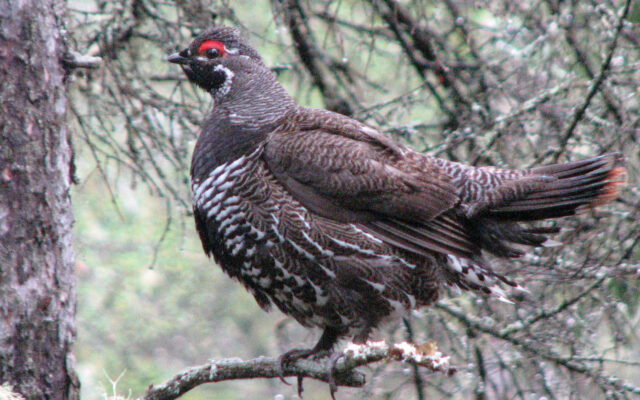
Maine is weird and that makes it a wicked good place for birds
By Bob Duchesne
“Maine Is Weird.†That is the title of a video I produced for my Bob Duchesne YouTube channel last summer. Much to my surprise, the video attracted triple the usual number of views. I listed eight reasons why Maine is weird, though there are certainly more reasons than that.
One oddity really surprised me.
Which state is closest to Africa? Like most folks, I figured it must be Florida.
Wrong. It’s Maine. Specifically, Quoddy Head State Park is 3,154 miles from El Beddouza, Morocco. The two sites used to be much closer. In fact, they were conjoined 350 million years ago, when drifting continents collided to form one big supercontinent. When the landmass split apart again, about 120 million years later, it left a giant mess on the shoreline — the rugged, rockbound coast of Maine. When glaciers came along later, they beat up the coastline even more.
Thus, the present day Maine seashore is endowed with plentiful nooks and crannies, bays and coves, and a treasure trove of offshore islands. Small wonder that so many sea birds like Atlantic puffins nest here, and many more Canadian birds winter here.
Glaciers also carved up the land surfaces, carrying earth out to sea, all the way to Cape Cod. What remained was well-drained, sandy soil — excellent for growing potatoes and blueberries. Birds that typically breed in the western prairies, like upland sandpipers and vesper sparrows, find Maine’s blueberry barrens quite hospitable.
We all know that Maine sticks up into Canada, but let’s put some perspective on it. If you drove to the top of New Hampshire, Vermont, or New York, you’d only be halfway to the top of Maine. In fact, if you live in Fort Kent, you live farther north than anyone living in Halifax, St. John, Moncton, Fredericton, Quebec, Montreal or Toronto. You live farther north than most Canadians.
This northern exposure means that Maine is home to many birds that aren’t found in most other eastern states. Even the woodlands make a gradual change here, as the southern hardwood forest of Appalachia transitions into the coniferous boreal forest of northern Canada. You might find Tennessee, Cape May, mourning and bay-breasted warblers nesting north of Bangor. You aren’t likely to find them breeding in southern Maine. Ditto for Canada jay, spruce grouse, boreal chickadee and black-backed woodpecker.
Furthermore, Maine is the most forested state in America. Nearly 90 percent of the state is tree-covered. Maine retains so much breeding bird habitat that we should be the birding envy of every other state. Somehow, we’ve managed to keep that a secret.
Maine is wicked wet. How wet? Maine has four times the wetland area of the other five New England states combined. We have more than 6,000 lakes and ponds. We make a lot of baby water birds here, and that doesn’t even include all of the saltwater marshes and mudflats.
Maine has the only national park in the Northeast, Acadia National Park. The next nearest, Shenandoah National Park in Virginia, is 800 miles away. Maine also has Katahdin Woods and Waters, the only national monument in the Northeast, unless you include the Northeast Canyons and Seamounts Marine National Monument off the southern New England coast. Maine has Baxter State Park, bigger than our national park and monument combined. In Maine, birders can really go wild.
It gets wilder. Maine has a long and unusual tradition of public access to private land. In some states — many states, really — I don’t dare to step off the road. Private land is strictly off limits, even if not posted. But in Maine, I pinch myself to see if I’m dreaming. My happy place is the North Maine Woods, where millions of acres invite me and my binoculars to go find some amazing birds.
Even our ocean is weird. The Gulf of Maine is unusually cold. The warm waters of the Gulf Stream bypass Maine. Instead, the frigid Labrador Current creeps down from the north and gets trapped along our shores. Cold water holds more oxygen, nourishing the tiny critters that the larger critters feed on, all the way up to the whale-sized critters. And lobsters.
Sadly, we’re becoming a little less weird, a little too quickly. The Gulf of Maine is warming faster than virtually every other part of the ocean on earth.
Sure, birds fly south for the winter. But for many subarctic birds, Maine is sufficiently far south. Finches from Canada fill our forests in some winters. Many come right to our feeders. That’s weird.